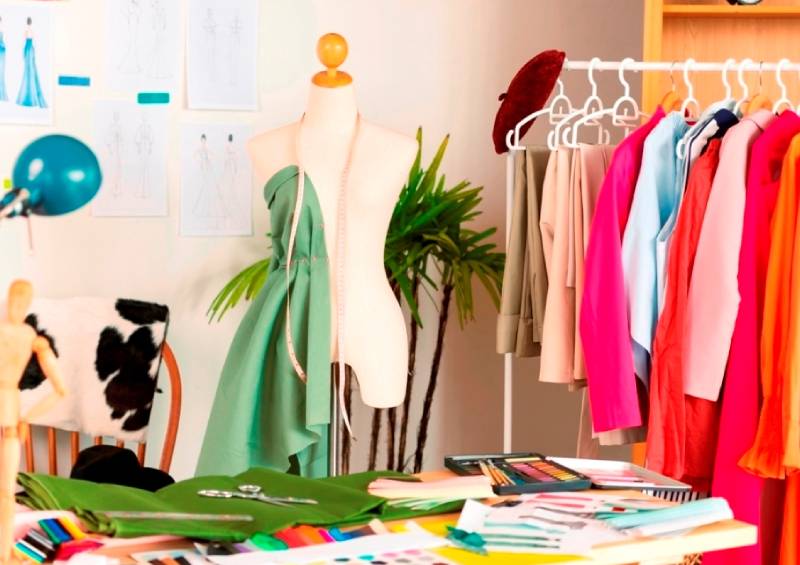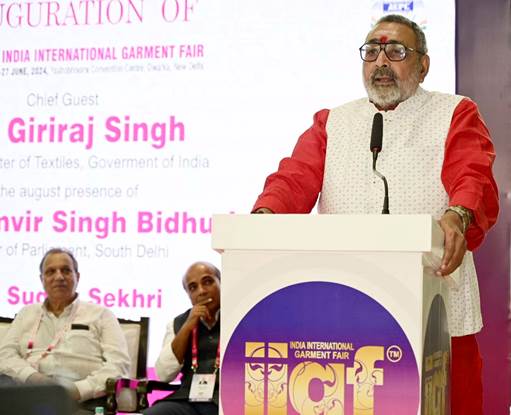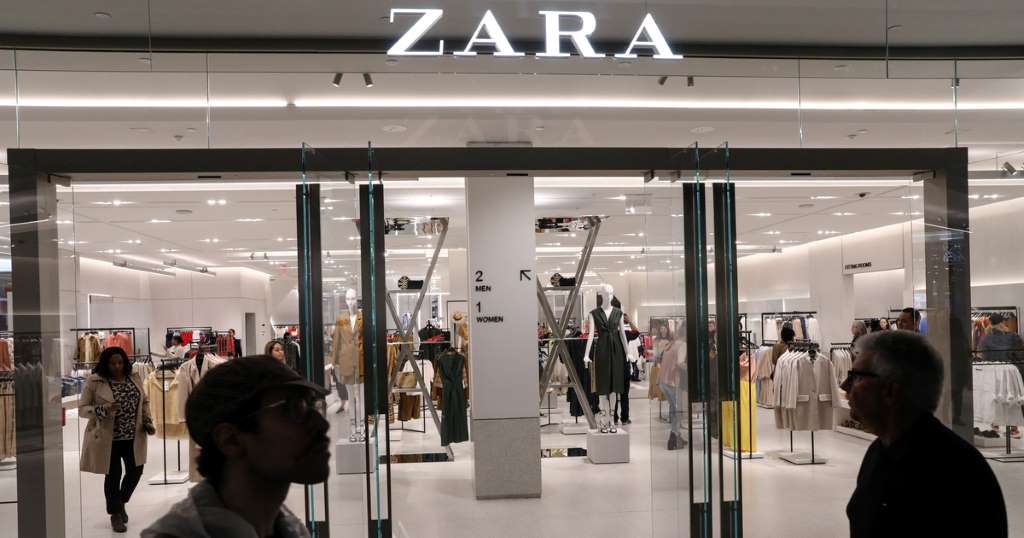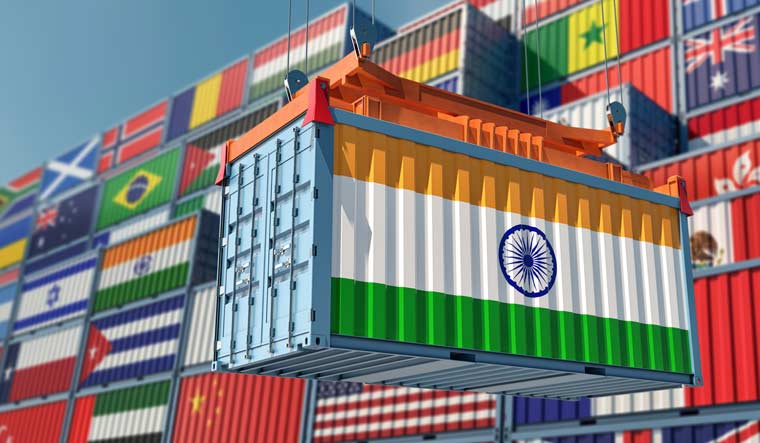FW
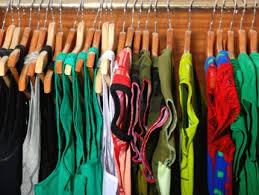 A recent report by Companies and Markets Research says, despite the current global economic downturn, the global apparel industry continues to grow at a healthy rate. This coupled with the absence of switching costs for consumers and great product differentiation, means that rivalry within the industry is no more than moderate. The apparel industry is of great importance to the economy in terms of trade, employment, investment and revenue all over the world. The industry has short product life cycles, vast product differentiation and is characterised by great pace of demand change coupled with long and inflexible supply processes.
A recent report by Companies and Markets Research says, despite the current global economic downturn, the global apparel industry continues to grow at a healthy rate. This coupled with the absence of switching costs for consumers and great product differentiation, means that rivalry within the industry is no more than moderate. The apparel industry is of great importance to the economy in terms of trade, employment, investment and revenue all over the world. The industry has short product life cycles, vast product differentiation and is characterised by great pace of demand change coupled with long and inflexible supply processes.
As per the report, the global apparel industry -- encompassing clothing, textiles, footwear and luxury goods – touched approximately $2,560 trillion in 2010. The apparel, luxury goods and accessories portion of the market, which accounts for over 55 per cent of the overall market, is expected to generate $3,180 billion in 2015, with a yearly growth rate of more than 4 per cent.
The emerging markets
Apparel remains largely a discretionary purchase compared to other consumer goods, making it more prone to economic shocks. The market has shown significant recovery from the 2008-09 slow down, with robust growth in emerging markets. The global apparel market has been shaped by three contrasting regional movements: robust growth in emerging markets, fragile recovery in the US, and a sharp slowdown in Western Europe.
Despite a relatively low percentage of its total population using the internet, Asia-Pacific boasts of some of the most tech-savvy consumers. The e-commerce explosion has been particularly pronounced in China, where the channel's share more than doubled from 3 per cent in 2011 to 7 per cent in 2012. Although the convenience factor is the primary driver of internet sales, the prevalence of discounts online has added to its appeal. The main challenges to growth in emerging markets are: the prevalence of cash culture, and caution over sharing credit card details online. With the online channel stealing market share, apparel specialist retailers and department stores have been investing heavily in creating compelling in-store environments and services to rebuild their appeal.
Market segments
The global children’s wear market is expected to go beyond $186 billion in 2014, marking a 15 per cent increase in five years. The Americas hold under 40 per cent of the global market. The global men’s wear industry is expected to exceed $402 billion in 2014, representing over 14 per cent expansion in five years. The leading market sub segment is clothing and footwear, with over 58 per cent of the market. The Americas have a 35 per cent stake in the overall market.
Global women’s wear industry is expected to exceed $621 billion in 2014, growth of over 12 per year on year. The leading market sub segment is clothing retailers, with over 64 per cent of total market value. The EU has a more than 37 per cent stake in the world market, which is fragmented and highly competitive.
The report states that entry to the apparel retail industry does not require large capital outlay. Setting up a single, independent apparel retail store is within the means of many individuals, even in countries like India and China, where median incomes are low. However, in some countries a few large corporations account for a major share of total industry’s revenue. Their scale economies include the ability to build brands in multiple retail outlets, and greater buying power when negotiating with suppliers. The global apparel industry is fragmented but there is room for large numbers of smaller players in this industry.
www.companiesandmarkets.com
 Vietnam's textile industry is aiming to achieve export revenue of $22-23 billion in 2014 banking on the positive global economic recovery, rising demand for clothes and continuous efforts to increase production capacity.
Vietnam's textile industry is aiming to achieve export revenue of $22-23 billion in 2014 banking on the positive global economic recovery, rising demand for clothes and continuous efforts to increase production capacity.
Vietnam’s garment and textile industry in the first two months of this year gained a year-on-year increase of 30.1 per cent in export value to reach $3.2 billion. The industry had a surge of 44.9 per cent in export value in February to reach $1.3 billion. The country’s textile and garment industry firms have started large projects to expand their production and receive new business opportunities this year.
In 2013, Vietnam's textile and garment industry gained $20 billion in export value. A year-on-year increase of 18.6 per cent to reach $17.9 billion for textile and garment exports and a 15.7 per cent surge to reach $2.1 billion for fiber products. The industry boasted of a trade surplus of $5.12 billion dollars last year, with imports of raw materials estimated at $14.88 billion.
So far, many enterprises have signed export contracts to be completed by the third quarter of this year. Many Vietnamese companies have invested several times in developing their production capacity to become an original design manufacturer. An original design manufacturer (ODM) is a company which designs and manufactures a product which is specified and eventually branded by another firm for sale. Now many foreign customers want partners which can provide ODM services to help them save money and time.
Garco10, a leading garment manufacturing factory, expects to achieve export revenues worth $90 million, 11 per cent more than it managed to earn in 2013. Apart from maintaining exports to traditional markets such as the United States, the EU and Japan, Garco10 is also looking to explore exports to future Trans-Pacific Partnership member states.
New investments to boost production
Vietnamese manufacturers are putting in money to increase production capacity this is being done to cater to existing demand and to reach out to newer destinations. The Garco10 company, for example has invested in two new shirt production lines at the Trieu Do Company in Thanh Hoa province, 10 shirt production lines at Ha Quang Factory in Quang Binh province and a premium vest production line at Hung Ha Factory in Thai Binh province. Garco10 is also introducing specialised software to remove redundant operations and increase productivity.
The Dong Nai Garment Corporation, which has already received a good number of large orders till last September, has put into operation seven production lines in Dong Xoai town, Binh Phuoc province. Another 15 production lines at Dong Xuan Loc Company is expected to become operational this June. This year, the company aims for export revenues of $47 million, 10 per cent higher than in 2013.
The Duc Giang Garment Corporation’s export revenue in January was estimated at $7.5 million, up by 15 per cent compared to January 2013. The corporation has received orders for delivery until the second quarter of the year, and is building a factory in Hoa Binh province to increase its production capacity. It has set a target of $89 million in export for 2014, up by 20 per cent since last year.
Rising opportunities
According to industry estimates, most of the companies have orders to fulfil until the end of the first and second quarter of this year. Experts are positive that with economies of large markets such as the US, EU, Japan and the Republic of Korea (Rok) showing signs of recovery, textile export revenues of Vietnam would gain importance.
The forecast is that Vietnam's annual textile export revenues to the US will rise to $10 billion dollars by the end of 2014, up 17 per cent compared to that of 2013. And once the Trans-Pacific Partnership (TPP) is signed, the country will further gain advantage to export to the US, as the textile import tariff will come down to zero per cent. The exports of Vietnam's textiles to the EU will also see a strong increase when the Vietnam–EU Free Trade Agreement is signed.
Japan is another potential market for Vietnam’s textile. Exports to the country are estimated to reach $3 billion in 2014, an increase of 20-25 per cent against 2013. Also, the market share of Vietnam textiles in RoK has increased since the ASEAN–RoK Free Trade Agreement took effect in 2007. The export of textiles from Vietnam to Rok in 2013 witnessed a rise of nearly 54 per cent compared to 2012.
Despite many hurdles that includes strict commercial barriers, particularly in the US, such as strict requirements for social responsibility, eco-labels etc; orders shifting from Vietnam to Bangladesh, Laos and Cambodia Vietnam’s garment sector has set a target to increase the proportion of FOB model production from 38 to 50 per cent, and ODM model production from 5 to 10 per cent in 2015. The textile industry is expected to achieve a localisation rate of 60 per cent by 2015 and 70 per cent by 2020.
Garco10.vn
Knitted fabrics of various weights and compositions in all fashion sectors stole the show at Premiere Vision, Paris held from February 18 to 20. It is a trend reflecting the importance placed on knitted fashion. Fashion brands are developing comprehensive and coordinated collections in knitwear. Colors like spring yellow, pink and green found their way into fabrics as diverse as linings to techno knits, fine jerseys and eco qualities. Fashion colors were made brighter on white or ecru backgrounds. Darker navies came in for black, as well as the traditional nautical colors associated with summer.
Cotton and linen were the most prevalent fibers, sometimes with small amounts of animal hair, a little mohair, alpaca or cashmere added for softness or visuals. Linen is now used extensively for knits, either in a fine gauge lingerie and underwear look in pale pastels and white, or in more chunky weighty versions with a chainmail effect.
Open stitchwork and airy constructions were echoed with cut outs and fancy stitches to create irregular patterns and the element of surprise. Net and gauzy open knits, transparent yarns and fabrics, brushed cotton with a velvet touch, fine gauge wool and cashmere, delicate cotton and linen for open stitched designs combined to make knitted fabrics a talking point.
www.premierevision.com/en
The 53rd Dornbirn Manmade Fiber Congress will take place in Austria from September 10 to 12, 2014. This is an international platform for manmade fibers. It has participants from the whole textile processing chain. Representatives from the manmade fiber industry, the processing chain and the academic research field use this communication platform for intensive exchange of ideas.
Among the topics are fiber/filament innovations (oil and bio based fiber raw materials, carbon fibers, functionalities, waste management), nonwovens/filtration, automotive (transportation—train/ship/air) and key technologies (finishing, coating, spinning, extrusion).
It will feature around 100 lectures by experts. The show will also present the enlarged key technologies section, which will discuss the latest findings in the field of finishing, coating, machinery for spinning/extrusion and joint developments between academic research and industry. Along with innovation, cost efficiency and competitiveness have become decisive factors for the success of European fiber industry.
There will be speeches on nonwovens and on standardisation of antimicrobial testing methods. Invista will present findings of market research on consumer trends in textiles. Radici Partecipazione will speak about sustainability as a source for market opportunities meeting the challenges of integrated production.
www.dornbirn-mfc.com/en/tagung/tagung.asp
Bangladesh’s first denim show that concluded on March 2 was a huge success. The show, spread over two days, created a new platform for ensuring a large ecosystem of the denim supply chain for global buyers.
Foreign buyers look to Bangladesh as a lucrative destination for apparel, particularly denim outsourcing, as the country has a capacity to provide quality items at a lower cost. Many overseas entrepreneurs are now planning to expand their business in the South Asian country to meet the growing demand for denim products in the global market.
Nearly 25 companies including American & Efird (Bangladesh), Arvind (India), Brandix Textiles (Sri Lanka), Naveena Exports (Pakistan) and YKK (Japan) took part in the exhibition to showcase denim pants, fabrics and the latest accessories. The organizers are planning to hold such an exhibition each year to upgrade the country’s denim sector to an international standard. Such exhibitions take place in Paris, Sweden, Shanghai, Hong Kong and the US annually.
Bangladesh, the second largest producer of denim apparel, ships around 185 million pieces of denim jeans around the world annually, and has more than 5,600 factories concentrated around the capital Dhaka and the port city Chittagong.
Clariant has released ColorForward Interiors 2015, the second annual color forecasting guide for producers of textile yarn and filaments, and designers and manufacturers of textiles, upholstery and carpeting. Clariant is a world leader in specialty chemicals. The color guide defines four trends that can be expected to attract consumer attention in the next few years and creates a color palette that can help marketers tap into the emotions behind those cultural currents.
ColorForward Interiors is derived from Clariant’s ColorForward program, now in its ninth year. ColorForward springs from the minds and experience of color, design, marketing and polymer experts, representing multiple creative industries from all over the world. ColorForward Interiors is produced in collaboration with the Clariant Masterbatches Textile Group and expands the platform to provide additional relevance to the fiber and yarn industry.
ColorForward Interiors 2015 is targeted at fiber customers, whether they are in carpets, automotive textiles, upholstery or elsewhere. It presents a palette of forty colors, ten for each of four societal trends expected to influence consumers around the world. Each color is presented in polyamide or polypropylene fibers that are formed into pompons and stored in a presentation box that is decorated with illustrations representing the four trend themes. The pompons can be rearranged inside the box to create hundreds of combinations using strong, bright colors with complementary and contrasting neutrals and mid-tones.
www.clariant.com/
Lectra has appointed Céline Choussy Bedouet as marketing director for automotive, furniture, technical textiles and composite materials. Lectra is the world leader in integrated technology solutions dedicated to industries using soft materials—fabrics, leather, technical textiles and composite materials.
Bedouet has two priorities: to promote the automatic cutting of leather interiors to strengthen Lectra’s leading position in the automotive market, the second is to increase Lectra’s presence in the furniture, technical textiles and composite materials markets. She has a rich and diverse marketing experience, including strategic, operational marketing, field, channel and partner marketing.
In five years, Lectra’s market share has risen from 15 per cent to 60 per cent in the automatic fabrics cutting for automobile interiors. Lectra is the world leader in integrated technology solutions that automate, streamline and accelerate product design, development and manufacturing processes for industries using soft materials. Lectra develops the most advanced specialized software and cutting systems and provides associated services to a broad array of markets including fashion (apparel, accessories, footwear), automotive (car seats and interiors, airbags), furniture, as well as a wide variety of other market sectors, such as aeronautical and marine industries, wind power and personal protective equipment.
www.lectra.com/
The Brandix Group has invested around $1 billion over three years to set up a new venture called ‘Disrupt Unlimited’ that will inspire, mentor and fund start-ups with breakthrough solutions to disrupt products, practices, processes and business models in these sectors. The aim behind launching this innovative concept is to encourage innovators from across industries to develop technology-driven solutions that address challenges at every stage of the supply chains, leading to revolutionary changes in the way apparels, textiles and accessories are made, packaged, distributed and consumed.
Disrupt Unlimited will offer seed funding, advisors, practical workshops, networking opportunities, collaborative workspace and legal and administrative services, along with the opportunity to pitch game-changing ideas to venture capitalists and angel investors. The new concept was launched at Brandix Essentials on February 21, 2014 with the start of a two-week ‘Disrupt-a-thon’ at which 20 innovators faced eight industry-related challenges in collaboration with mentors from companies in the Brandix Group and from the group associate Textured Jersey Lanka PLC.
A preferred supplier to many global apparel labels, Brandix was the first apparel manufacturer in the world to build a Leadership in Energy and Environmental Design (LEED) Platinum-rated green factory certified by the US Green Building Council (USGBC); the first in Sri Lanka to build a LEED Gold certified office complex; and the builder of the first Supply Chain City in South Asia -- the 1,000-acre Brandix India Apparel City (BIAC).
www.disruptunltd.com
www.brandix.com
The 34th Texworld exhibition, held in Paris Le Bourget from February 17 to 20 attracted 13,523 visitors from 103 countries. It’s an increase of 11 per cent. They came to discover extensive ranges and new products being offered by 631 exhibitors from 25 countries.
The exhibition attracted all major high-street brands for fast fashion, both up-and-coming and renowned ready-to-wear labels and international designers. They came to buy, discover new trends and innovations, promote new product developments and exchange ideas on sustainability.
Sustainable development has always been a priority for Texworld, it organized many initiatives like the Sustainable Sourcing Itinerary that lists exhibitors offering sustainable products. The show included 54 such exhibitors from 13 countries from all product segments including cotton, technical and functional materials. Sustainability Day witnessed talks by international organisations who specialise in issues relating to sustainability, such as Wellmade, Ecomundo and ethics on labels. A green and ethical label, Ekyog, gave a well-attended lecture on key factors for success and the limitations, based on the analysis of their own 10-year business.
Other initiatives included creation of the Sustainable Forum, where 200 samples of the best sustainable fabrics were showcased against a backdrop designed using canvas and twine. There was a Sustainable Lounge to facilitate meetings between visitors and organisations/international experts on the subject.
Eco-friendly and ethical materials were in demand, especially main brands for fast fashion like H&M and the Inditex Group. The next Texworld will take place from September 15 to 18, 2014, at Le Bourget, Paris.
www.texworld.messefrankfurt.com
With eight foreign companies announcing their plans to invest around $700 million, the American textile industry has been witnessing a sudden rise in foreign direct investment (FDI) over the past eight months. These investments are expected to generate about 1,900 new job opportunities in North Carolina, South Carolina, Georgia, and Louisiana.
With ‘Made in USA’ trend gaining momentum, the United States is emerging as an attractive option for textile manufacturers looking for competitive energy, transportation, and fiber costs compared to current sourcing destinations like China, which is grappling with rising labour and raw material cost. The surge in investments is also being attributed to US trade policy in the textile sector. Over the past 25 years, the country has completed a series of free trade agreements that include a Yarn-Forward Rule of Origin for textile and apparel products.
The Yarn-Forward rule has helped the US textile industry become the third largest exporter of textile products in the world. US exports of all textile products were around $17.9 billion in 2013. Over the past 10 years, textile exports have grown exponentially from $12.7 billion in 2003 to $17.9 billion in 2013, a 40.6 per cent increase.
Examples of FDI investments include largest investment announcement of about a quarter of a billion dollars from Gildan Activewear, based in Montreal, Canada. Apart from Gildan, since August 2013, textile companies from India, Mexico, and China have announced new investment plans in the United States.
www.gildan.com



